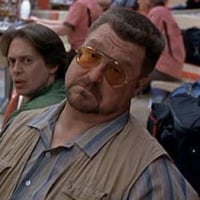Happy New Year Everyone!!!

Have a happy and safe new years to all of my brothers of the leaf!!!
Comments
-
Happy new year all.
3 -
Happy New Years all
2 -
Happy new year!!!🍾🥂
1 -
Happy New Years cigar lovers!
1 -
Happy New Year! Here’s to hope!
1 -
Happy new year
1 -
Happy New Year all.
 1
1 -
Happy New Years all!
If you want to bomb me send it to Tony @0patience

If you are a newbie I got Dem nachos....0 -
Happy New Year!
Trapped in the People's Communist Republic of Massachusetts.
0 -
Happy New Year!
0 -
(NEXSTAR) – Of all the ways we could be celebrating the coming New Year, a significant percentage of Americans will be looking to the sky over New York City — either in person, or via their TVs — to watch a great big ball descend from one seemingly arbitrary spot above Times Square to another seemingly arbitrary (albeit lower-altitude) spot above Times Square.
It is, admittedly, a very shiny ball. It’s covered in thousands of crystal panels, and illuminated by even more LED lights. But at the end of the day (or year, in this case), it’s still just a ball, isn’t it?
Why are we looking at a ball again?
As random as it might appear, this particular tradition traces its origins back hundreds of years. Some of the first “time balls,” as they’re known, were placed above buildings in England in the early half of the 19th Century. These balls would be lowered at a precise time — usually 1 p.m. — in order to help nearby ship captains accurately set their marine chronometers, or inform locals of the time of day.
The time ball on the roof of Royal Observatory, Greenwich, is still in operation today. (Oli Scarff/Getty Images)
One of the earliest “time balls,” installed 1833 over an observatory at southeast London’s Royal Observatory, Greenwich, is even cited as the inspiration (at least in part) for the New Year’s Eve ball drop in Times Square, according to the Times Square District Management Association.“The tradition [of time balls] is carried on today in places like the United States Naval Observatory in Washington, DC, where a time-ball descends from a flagpole at noon each day — and of course, once a year in Times Square, where it marks the stroke of midnight not for a few ships’ captains, but for over one billion people watching worldwide,” reads the association’s official website.
Still, this doesn’t quite explain why Times Square — a district not easily visible to passing ship captains — chose to drop a time ball instead of something a little more extravagant.
Perhaps not surprisingly, a time ball wasn’t the first choice. Fireworks were.
The first New Year’s Eve celebration in Times Square was organized by The New York Times in 1904, to coincide with the official opening of the newspaper’s new headquarters. (The area was previously known as Longacre Square, before the Times moved in and lobbied to rename it.) A huge fireworks display was part of the festivities until 1907, when the practice was banned by the city. For that year’s celebration, an illuminated time ball was chosen as a suitable replacement by New York Times owner Adolph Ochs, according to the Times Square association.
Nearly early every year since (with the exception of a few during WWII, when the ball drop was paused to comply with wartime blackout policies), Times Square’s revelers have looked forward to having a ball on New Year’s Eve.
Of course, those seeking something a bit less ball-ish can always watch other objects drop from the sky on New Year’s. The city of Mobile, Alabama, for instance, hosts a yearly MoonPie drop (for real), and folks in Mount Olive, North Carolina, can watch a big pickle slowly descend from a height. Anyone interested can catch both events online, too.
3 -
Happy New Year!!! Even though I already said it in the other thread (sigh) you all are special enough to warrant a second HNY.
"I could've had a Mi Querida!" Nick Bardis2 -
 "I could've had a Mi Querida!" Nick Bardis0
"I could've had a Mi Querida!" Nick Bardis0











